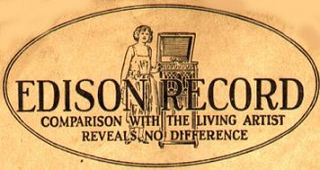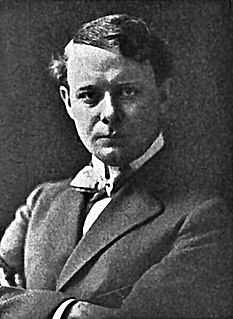The Motion Picture Patents Company, founded in December 1908 and terminated seven years later in 1915 after conflicts within the industry, was a trust of all the major US film companies and local foreign-branches, the leading film distributor and the biggest supplier of raw film stock, Eastman Kodak. The MPPC ended the domination of foreign films on US screens, standardized the manner in which films were distributed and exhibited within the US, and improved the quality of US motion pictures by internal competition. But it also discouraged its members' entry into feature film production, and the use of outside financing, both to its members' eventual detriment.

Thomas Alva Edison was an American inventor and businessman. He developed many devices in fields such as electric power generation, mass communication, sound recording, and motion pictures. These inventions, which include the phonograph, the motion picture camera, and early versions of the electric light bulb, have had a widespread impact on the modern industrialized world. He was one of the first inventors to apply the principles of organized science and teamwork to the process of invention, working with many researchers and employees. He established the first industrial research laboratory.

Phonograph cylinders are the earliest commercial medium for recording and reproducing sound. Commonly known simply as "records" in their era of greatest popularity, these hollow cylindrical objects have an audio recording engraved on the outside surface, which can be reproduced when they are played on a mechanical cylinder phonograph. In the 1910s, the competing disc record system triumphed in the marketplace to become the dominant commercial audio medium.

Edison Records was one of the early record labels that pioneered sound recording and reproduction, and was an important player in the early recording industry.

Blue Amberol Records was the trademark name for cylinder records manufactured by Thomas A. Edison, Inc. in the US from 1912 to 1929. They replaced the 4-minute black wax Amberol cylinders introduced in 1908, which had replaced the 2-minute wax cylinders that had been the standard format since the late 1880s. Blue Amberols can play for as long as 4 minutes and 45 seconds and have a surface layer of the "indestructible" plastic celluloid, which Edison tinted a trademark blue color. Edison brand phonographs designed to play Amberol cylinders were named Amberolas.

The Edison Diamond Disc Record is a type of phonograph record marketed by Thomas A. Edison, Inc. on their Edison Record label from 1912 to 1929. They were named Diamond Discs because the matching Edison Disc Phonograph was fitted with a permanent conical diamond stylus for playing them. Diamond Discs were incompatible with lateral-groove disc record players, e.g. the Victor Victrola, the disposable steel needles of which would damage them while extracting hardly any sound. Uniquely, they are just under 1⁄4 in thick.

Edison Studios was an American film production organization, owned by companies controlled by inventor and entrepreneur, Thomas Edison. The studio made close to 1,200 films, as part of the Edison Manufacturing Company (1894–1911) and then Thomas A. Edison, Inc. (1911–1918), until the studio's closing in 1918. Of that number, 54 were feature length, and the remainder were shorts. All of the company's films have fallen into the public domain because they were released before 1925.
Bobo Chan Man-Woon is a former Hong Kong singer and model. She was also an actress in several film and TV-series.

Ada Jane Jones was an English-American popular singer who made her first recordings in 1893 on Edison cylinders. She is among the earliest female singers to be recorded.

What Happened to Mary is the first serial film made in the United States. Produced by Edison Studios, with screenplays by Horace G. Plympton, and directed by Charles Brabin, the action films starred Mary Fuller.

Charles Stanton Ogle was an American stage and silent-film actor. He was the first actor to portray Frankenstein's monster in a motion picture in 1910 and played Long John Silver in Treasure Island in 1920.
The decade of the 1910s in film involved some significant films.

The Edison Manufacturing Company was a company organized in 1889 by the inventor and entrepreneur Thomas Edison that manufactured batteries, machinery and equipment, and also produced kinetoscope films. Its assets and operations were transferred to Thomas A. Edison, Inc. in 1911.

Thomas A. Edison, Incorporated was the main holding company for the various manufacturing companies established by the inventor and entrepreneur Thomas Edison. It was a successor to Edison Manufacturing Company and operated between 1911 and 1957, when it merged with McGraw Electric to form McGraw-Edison.

Gertrude McCoy was an American film actress of the silent era. She appeared in more than 130 films between 1911 and 1926.

Henry Bannister Merwin, was an American poet, magazine editor, novelist, film director and screenwriter during the silent era. He wrote as many as 141 films between 1909 and 1921. He was associated with Edison Studios and the London Film Company. Merwin often wrote with his wife, Anne Merwin.

George Edward Gouraud was an American Civil War recipient of the Medal of Honor who later became famous for introducing the new Edison Phonograph cylinder audio recording technology to England in 1888.

Harold Marvin Shaw was an American stage performer, film actor, screenwriter, and notable director of the silent era. A native of Tennessee, he worked professionally in theatrical plays and vaudeville for 16 years before he began acting in motion pictures for Edison Studios in New York City in 1910 and then started regularly directing shorts there two years later. Shaw next served briefly as a director for Independent Moving Pictures (IMP) in New York before moving to England in May 1913 to be "chief producer" for the newly established London Film Company. During World War I, he relocated to South Africa, where in 1916 he directed the film De Voortrekkers in cooperation with African Film Productions, Limited. Shaw also established his own production company while in South Africa, completing there two more releases, The Rose of Rhodesia in 1918 and the comedy Thoroughbreds All in 1919. After directing films once again in England under contract with Stoll Pictures, he finally returned to the United States in 1922 and later directed several screen projects for Metro Pictures in California before his death in Los Angeles in 1926. During his 15-year film career, Shaw worked on more than 125 films either as a director, actor, or screenwriter.
Parsifal is a 1904 American silent film produced by the Edison Manufacturing Company and directed by Edwin S. Porter. It is based on the 1882 opera Parsifal by Richard Wagner, and stars Adelaide Fitz-Allen as Kundry and Robert Whittier as Parsifal.
May Childs Nerney was an American civil rights activist and librarian. She was the secretary of the NAACP from 1912 to 1916, overseeing a large increase in the organization's size. She led protests against the segregation of federal government employees in Washington, D.C., and against the film The Birth of a Nation (1915). Nerney came into conflict with several members of the organization and resigned in 1916. She later worked on cataloging Thomas Edison's papers and published a 1934 biography on him, Thomas A. Edison, A Modern Olympian. She also worked with the League of Women Voters, the board of the Young Women's Christian Association, the Consumers Cooperative Services, and the New York Philharmonic Society.















